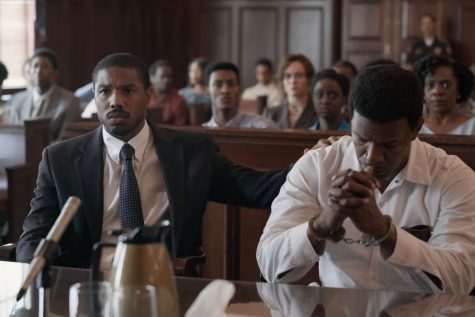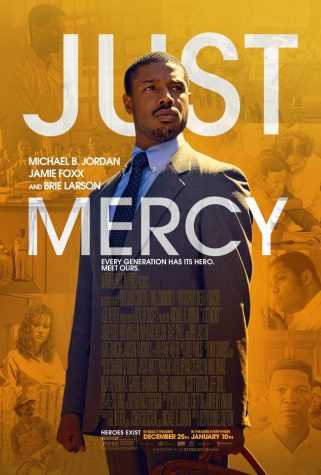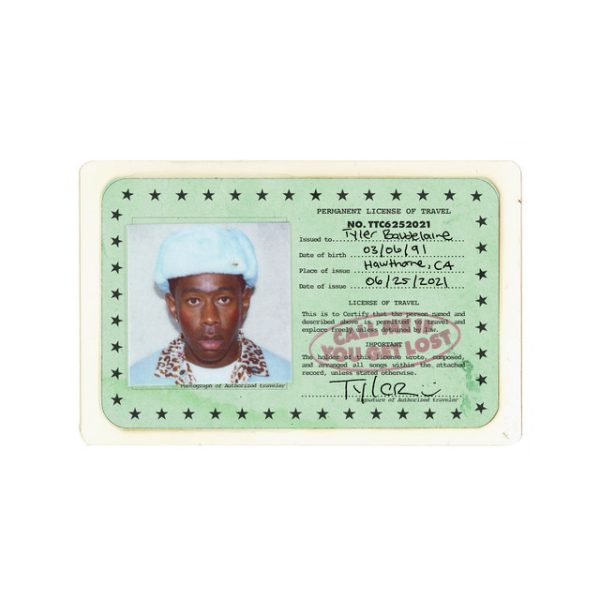‘Just Mercy’ deserves more than just a glance
January 23, 2020
The theater lights dim, the screen turns black and the audience quickly falls silent. The words, “Based on a true story,” appear in bright white text, setting the scene for an emotional rollercoaster of a movie.

“Just Mercy” is a story that challenges racial norms by following the highly acclaimed black attorney Bryan Stevenson. After graduating from Harvard Law School in 1985, Stevenson moved to Alabama and established the Equal Justice Initiative (EJI) to help people—mainly African American men—who were wrongfully put on death row to appeal their cases and fight to win back their lives.
The movie accurately depicts racial struggles in the deep South during the 1980s, prompting tears within the first few minutes. Michael B. Jordan, who plays Stevenson, perfectly embodies the young lawyer, fresh out of law school with big dreams to challenge racial discriminations in the criminal justice system. When he first visits Holman State Prison, where the majority of Alabama’s death row prisoners were and still are held, Stevenson meets a man named Walter “Johnny D.” McMillan (Jamie Foxx), whom he takes special interest in. McMillan was placed on death row after being accused of killing a white 18-year-old woman in the small town of Monroeville, Ala. After learning the trial against McMillan was entirely fabricated and racially motivated, Stevenson fights furiously for the innocent man’s freedom.

Though many critics—myself included—argue that it deserves all the highest acclamations, “Just Mercy” did not receive a single award. Unfortunately its Jan. 10 release date made it too late for Oscar nominations, and the Golden Globes had already passed. As mentioned before, Jordan’s acting skills are incredibly strong, which was pleasantly surprising due to the seriousness of this new role when compared to his previous roles, such as in “Black Panther”. Another notable actor from the film is Brie Larson, who has incredible chemistry with Jordan. Larson plays Eva Ansley, Stevenson’s original partner at the EJI, and the pair flawlessly portray the unlikely friendship between a white woman and a black man in the 1980s.
Though the acting was a major highpoint in the movie, the cinematography left the most lasting effect. Brett Pawlak, the cinematographer, made sure each and every scene is filled with emotion, creativity and intent. Nothing seems like a second thought nor is anything out of place; every shift of the camera or sudden change of perspective adds to the narrative.

My favorite examples were when they filmed the inmates on death row, as they seemed to capture the raw emotions that someone in such a trivial position would feel. Director Destin Daniel Cretton assisted Pawlak in decisions regarding his cinematography and therefore also deserves the highest of praises. Truly, the entire visual appeal of this movie is incredibly unique and was what initially grasped me while watching.
Overall “Just Mercy” is a must-see for almost any audience. It does include a lot of emotionally heavy and violent scenes, so it is clearly not made for everyone, and it might be more easily understood if you have some sort of knowledge about this time period. Nevertheless, with Black History Month being celebrated in February, this movie is the perfect gateway to start a conversation about how racism is still very prevalent in our modern society. If you are in need of a good cathartic cry or want to have some deep, insightful thoughts about race and society, I highly recommend checking out “Just Mercy.”























